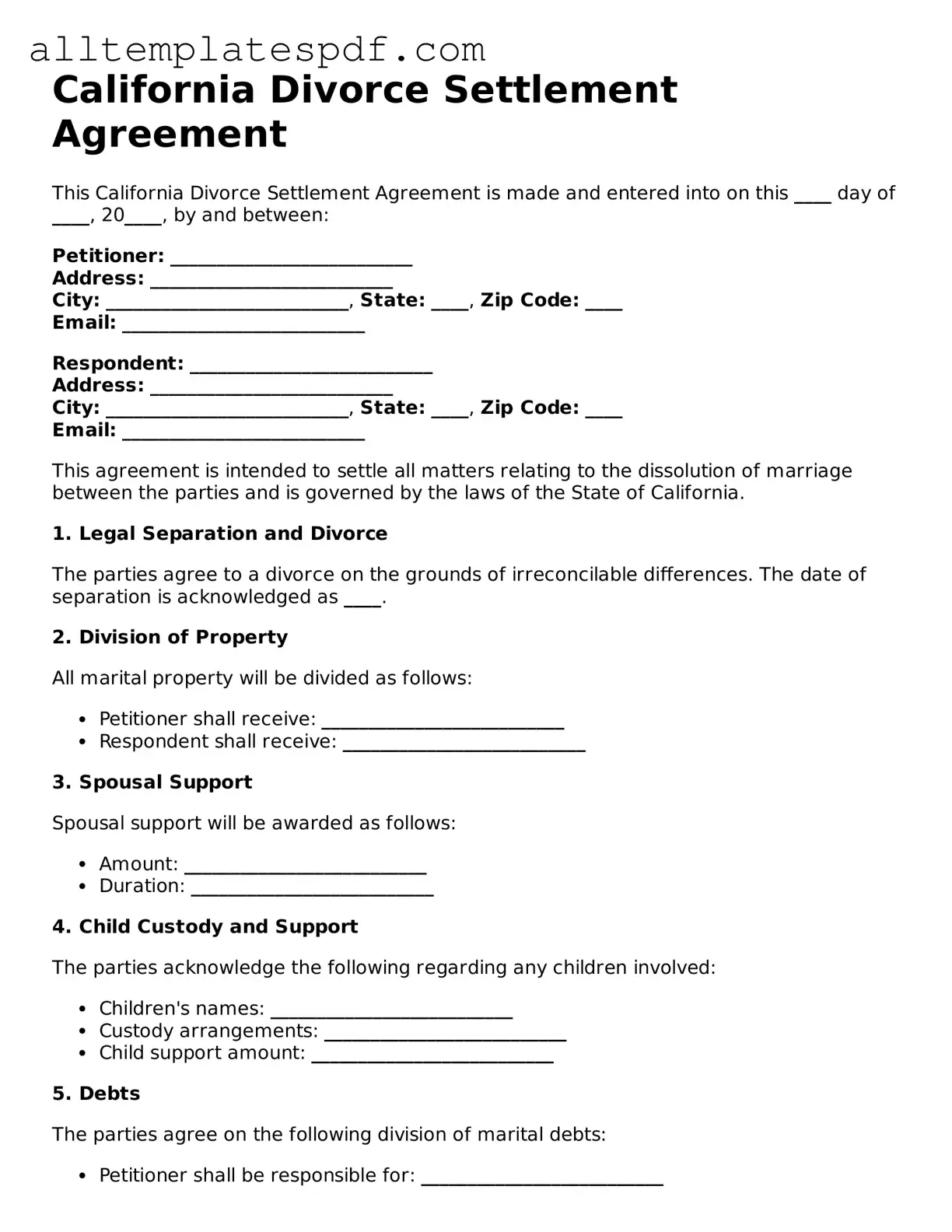Filling out the California Divorce Settlement Agreement form can be a daunting task. Many individuals make common mistakes that can lead to complications down the line. One frequent error is failing to provide complete and accurate information. Each section of the form must be filled out thoroughly. Omitting details can delay the process or result in the court rejecting the agreement.
Another mistake is not understanding the implications of the terms being agreed upon. Couples often rush through the language without fully grasping what they are signing. It's crucial to take the time to understand how each provision affects both parties. Misinterpretations can lead to disputes later, especially concerning child custody and support.
Additionally, people sometimes overlook the importance of including all assets and debts. A common pitfall is assuming that certain items don’t need to be listed. Every asset, from bank accounts to retirement funds, must be disclosed. Failing to do so can lead to legal challenges in the future.
Inaccurate calculations can also create issues. When determining child support or spousal support, it’s essential to use the correct formulas and current income information. Miscalculations can lead to unfair financial burdens, which may require future modifications.
Another common error is neglecting to consider tax implications. Many individuals do not realize that certain decisions made in the settlement can affect their tax situation. Consulting a tax professional can help avoid unexpected liabilities that arise after the divorce is finalized.
People often forget to review the agreement before submitting it. A final check can catch errors or unclear language that may cause confusion. This step is vital for ensuring that both parties are on the same page and that the document reflects their intentions accurately.
Some individuals also fail to seek legal advice. While it may seem tempting to handle the process independently, having a lawyer review the agreement can provide valuable insights. Legal professionals can help identify potential pitfalls that may not be immediately obvious.
Lastly, couples sometimes neglect to consider future changes. Life circumstances can evolve, and agreements should account for possible modifications. It’s wise to include terms that allow for flexibility regarding child custody and support as situations change over time.
